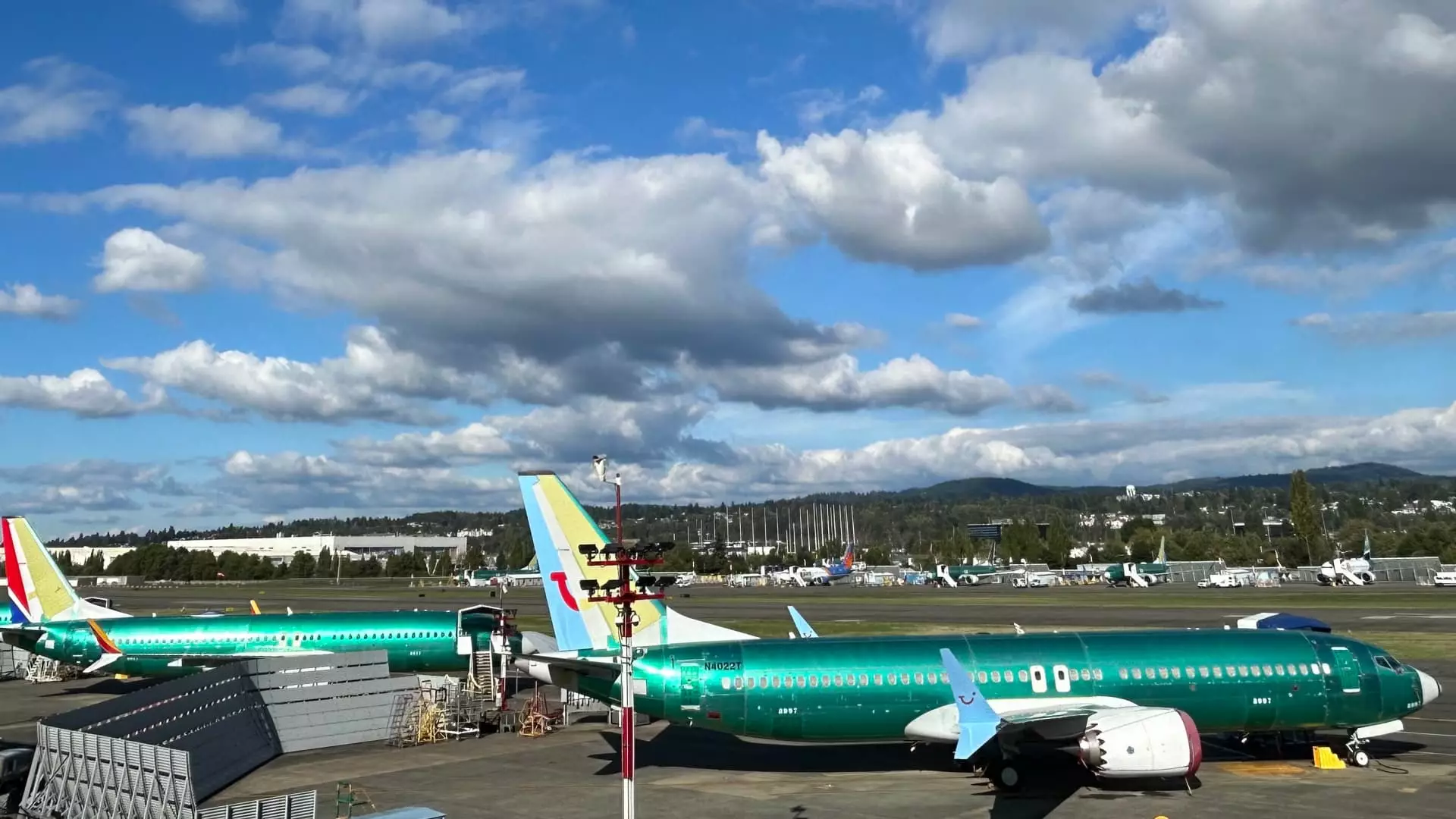Presidential travel in the United States is synonymous with the iconic Air Force One, a symbol of power and prestige that has graced the skies for decades. However, the latest developments surrounding the new Boeing 747s intended to replace the aging fleet have stirred frustration and uncertainty. Initially negotiated during Donald Trump’s first term, the ambitious $4 billion project has hit numerous snags, pushing completion years behind schedule, with cost overruns exceeding $2 billion. Such delays not only undermine the reliability of the U.S. presidential transportation system but also raise questions about Boeing’s capacity to meet governmental expectations.
The uncertainty surrounding the delivery timeline has prompted Trump to explore alternate aviation options, underscoring his dissatisfaction. This emerging sentiment highlights a more comprehensive issue at play — the intersection of government contracts, high expectations, and corporate capability. As Trump considers the possibility of procuring a different aircraft, it is evident that the friction between presidential demands and corporate performance is reaching a boiling point.
In an unexpected turn, Elon Musk, the disruptive tech mogul and CEO of SpaceX, has entered the fray, aiming to expedite the painstaking development process with Boeing. During a recent Barclays industrial conference, Boeing’s CEO, Kelly Ortberg, acknowledged Musk’s contributions in identifying unnecessary procedural hurdles. This collaboration presents an intriguing case study of how innovative thinking can be leveraged within traditional corporate structures to foster agility and expedite delivery.
Musk’s involvement signifies a crucial intersection between aerospace advancement and cutting-edge technology. By scrutinizing deeply ingrained technical requirements and disentangling bureaucratic constraints, both Boeing and Air Force One could achieve the agility necessary to fulfill governmental needs efficiently. However, the reliance on external partnerships raises questions: Is Boeing equipped to navigate the complexities of military contracts independently, or does it now depend on outside technology influencers to deliver results?
A Broader Context: The State of Commercial Aviation
The scenario with Air Force One is not an isolated incident; rather, it reflects broader trends within the commercial aviation industry. Following the pandemic, airlines faced overwhelming demand for planes, yet they grappled with supply chain disruptions and production delays. Boeing’s struggle is emblematic of an industry trying to rebound from deep-seated challenges while simultaneously evolving to meet tomorrow’s travel needs.
Notably, executives from major airlines are starting to report a shift in sentiment — an optimistic outlook that suggests Boeing may be regaining its footing. When United Airlines’ CFO expressed confidence in the timely delivery of new MAX aircraft, it painted a picture of cautious optimism. Such sentiments, echoed by Southwest Airlines’ leadership, indicate that, although challenges remain, progress is palpable, and recovery could be on the horizon.
Leadership transitions can profoundly impact a company’s trajectory, and with Ortberg’s ascent in August, there appears to be a renewed focus on reliability and customer satisfaction at Boeing. Crafting a turnaround strategy is no easy feat, particularly in a high-stakes environment where safety and efficiency are paramount. The optimism presented by airline executives suggests that stakeholders not only believe in Boeing’s potential for recovery but also anticipate a brighter future for the company — contingent upon its ability to resolve existing issues.
Looking ahead, the path toward completing the new Air Force One is strewn with challenges, requiring a mix of corporate ingenuity and governmental patience. Should Boeing successfully address the necessary adjustments and deliver on this monumental contract, the long-overdue fleet may not just symbolize the stability of presidential travel, but also a renewed confidence in American engineering prowess.
As the Air Force One saga unfolds, it serves as a microcosm of broader themes in the intersection of governance, aerospace innovation, and customer expectations. Frustration exists, yet it is accompanied by the possibility of transformation and growth. This narrative extends beyond mere contracts; it encompasses a commitment to resilience in the face of adversity and the pursuit of excellence in a rapidly evolving landscape.
The future of presidential aviation will undoubtedly depend on Boeing’s capacity to fulfill its obligations while navigating complexities inherent within the military and commercial sectors. Whether through internal restructuring or innovative partnerships, the journey toward the next generation of Air Force One serves as a testament to the challenges and triumphs that define the aviation industry today.

